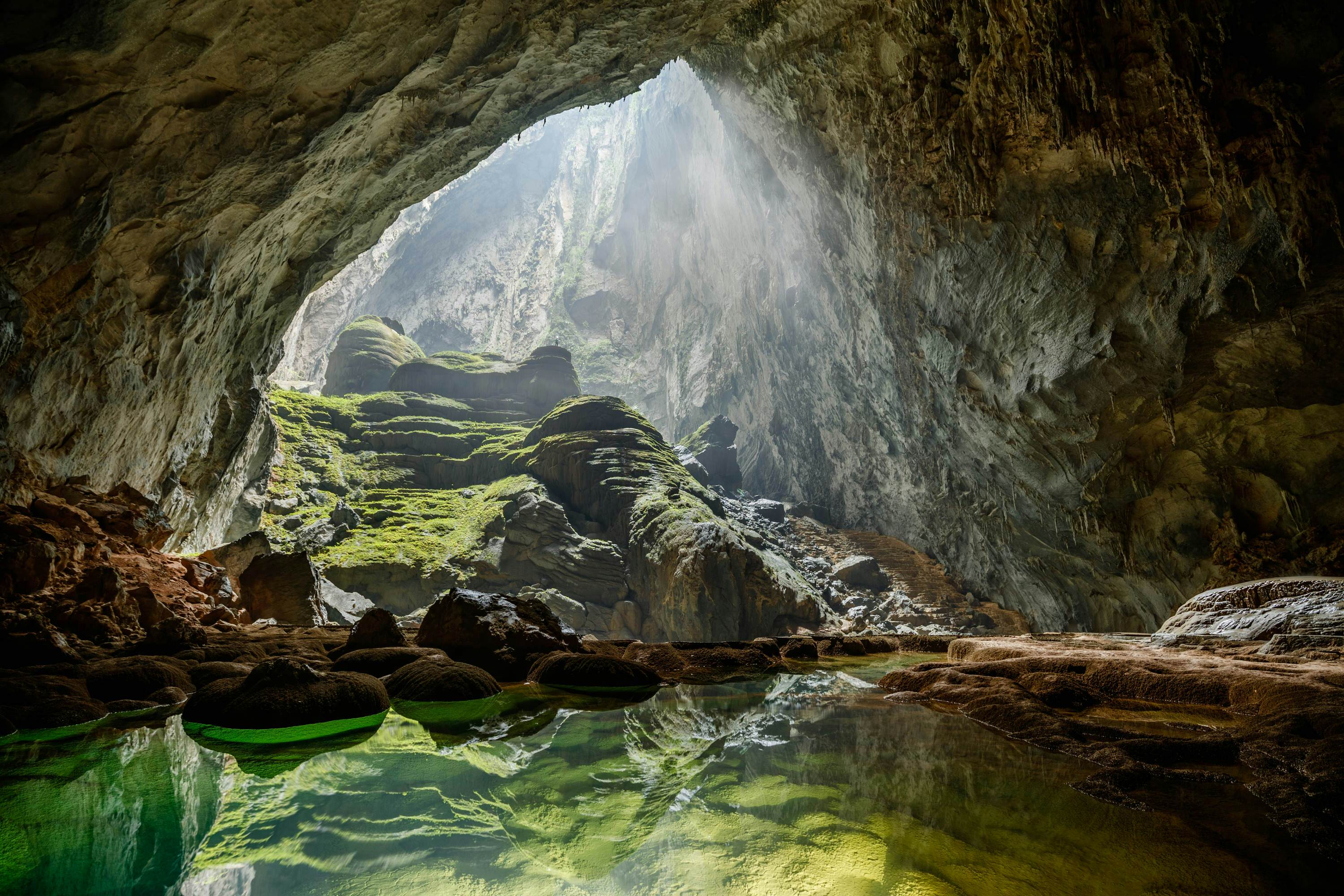Thanks to discoveries made at some stage in Vietnam’s latest expedition, it seems the sector’s largest cave, Son Doong, is even bigger than previously believed.
Last month, a trio of British divers — the equal divers who aided in the rescue of the trapped soccer group in Thailand in 2018 — ventured to Phong Nha-Ke Bang National Park, jungle-crammed Quang Binh Province of important Vietnam, to explore the cave’s waterways.
During the groundbreaking dive, they found a brand new underwater tunnel that connects Son Doong (that means “Mountain River Cave”) with any other widespread cave known as Hang Thung.
Son Doong measures 38.5 million cubic meters (about 1.35 billion cubic feet). It’ll add 1.6 million cubic meters in volume when formally linked with Thung Cave.

“It might be like someone located a lump on top of Mount Everest, making it another 1,000 meters better,” says Howard Limbert, technical marketing consultant of the Quang Binh-primarily based Oxalis journey excursion employer and one of the cave experts who helped organize the drive.
He tells CNN Travel, “Any cave within the global can be able to match without problems inside Song Dong while it is related — it is just outrageous in length.”
Oxalis, the simplest organization licensed to deliver tourists into Son Doong Cave, invited the British divers — Jason Mallinson, Rick Stanton, and Chris Jewell — to visit the cave following the Thai rescue excursion.
“The divers did an extraordinary task rescuing the children in Thailand. We invited them on a trip to Son Doong to thank them for their exquisite effort,” says Limbert.
“They wanted to do something thrilling all through the ride, so we came up with this concept of diving Son Doong, which had never been achieved before.”
Limbert says that the Oxalis group already knew that the water from Son Doong joined Thung Cave via dye-checking out, but no human has ever gone into these underground rivers.
During the challenge, divers reached an intensity of about seventy-eight meters at the same time as diving on air (oxygen and nitrogen) before turning around.
“When the divers reached seventy-eight meters, they plumbed the intensity using a line and a lead weight. Hence, they consider the offshoot to reach an intensity of a hundred and twenty meters and keep for about 1 kilometer,” explains Limbert.
The crew wasn’t looking ahead to the tunnels to be so deep because the alternative caves inside the region are quite shallow.
“Now that we realize how deep it’s miles, we’re going to carry the unique gases [oxygen-helium mixture] with us next time to permit lengthy, deep dives,” provides Limbert.
The divers will return in April in the subsequent 12 months. This is an exceptional time of year to dive. Water levels are deficient, and visibility is higher than ordinary- even though it is only approximately one to two meters.
“I suppose it’s superb that something as important as the world’s largest cave continues to be explored and highly understood,” says Limbert.
“No one had ever set foot inside Son Doong until 2009 … And this contemporary discovery shows many factors to find on the planet. It’s honestly exciting.”
One of the arena’s most precious natural wonders, Son Doong, was inadvertently discovered by Vietnam resident Ho Khanh in 1990.
“While looking within the jungle, Khanh came throughout the opening. He felt a blast of wind and heard a river push inside… But after he left, he could not find it again, as it’s surrounded by way of foliage,” says Limbert, who became part of the British Cave Research Association (BCRA) team that first set foot inside Son Doong.
“Khanh spent many years seeking to rediscover the mouth of this cave, and, sooner or later, in 2009, he led us there. We found out proper away that it was most important.”
After the BCRA explored and measured the cave, they proclaimed it the most important within the globe in 2010 — so massive that you can match a New York City block with forty-tale skyscrapers inside it, in keeping with Oxalis’s estimations.
Within the gigantic limestone cavern are various microclimates and numerous scenery, including two jungles, made possible via dolines- openings created by collapsed ceilings- where sunlight streams in.
“So some distance we’ve got most effectively explored approximately 30% of Phong Nha-Ke Bang National Park, so there is plenty more to be determined,” says Limbert.